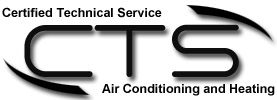Understand Your HVAC System
Keeping your house comfortably cool during summer and toasty warm on a cold winter day may sound easy, but there is a large amount of complexity and science behind it. The following information details some trends seen in HVAC energy usage, provides simple maintenance information, and covers the operation of an HVAC system. Go here to see a good resource on Understanding your home heating and cooling system.
A/C Energy Use in the UNITED STATES
Home heating and cooling normally makes up 48%, or 903kWh, of a family’s regular monthly electrical power usage. The Southern States, Mountain West, and Central States have the greatest regular monthly electrical power expense. You could boost the energy efficiency of your A/C system by recognizing exactly how your air conditioning system functions and adjusting how you set your homes temperature.
HVAC Equipment Heating and Cooling Fundamentals
Heat is transferred from objects at higher temperatures to objects at lower temperatures. In order to understand the thermodynamics governing your HVAC system, you have to first understand the three fundamental means of heat transfer:
- Conduction – Heat is transferred directly by contact.
- Radiation – Heat transfer via light, which is in either the visible or infrared spectrum.
- Convection – Circulation of warm air transfers heat.
Heated or cooled air is dispersed within a structure either by force (electrically powered fan), gravity (warm air rising) or radiation (heated flooring, wall surfaces, and ceilings).
Standard Components of Heating and Cooling HVAC Equipment
There are a number of general use tools that create or decrease heat within a house. Every one varies in power performance. For instance, a central heater with 80 % efficiency can increase a gas bill as much as $56.
- Heat Pump – This tool draws heat from one location (exterior in wintertime; interior in summer), passes it via a compressor, and expels heat on the other side through coils. This permits for heating in winter and also cooling in summertime.
- Furnace – A furnace uses fuel or power to create warmth, which is then spread around the house via ducts, wires, or pipes. The heat is distributed out of registers, radiators, or heating panels.
- Boiler – In a central heating boiler system, water is heated and saved until it is pumped inside pipes in the walls, ceilings, or floors to warm a residence.
- Air conditioning unit – An AC system cools a gas to a liquid within a coil, and air moved over the coil. This lowers the air temperature, and circulates it throughout the central air conditioning system.
Components Of An Air Conditioning System
An air conditioning unit is a very elaborate device that involves many components to function appropriately.
- Blower – This fan draws air over the evaporator, spreading cooled air.
- Compressor – The compressor moves refrigerant to the evaporator and back again to the condenser to chill the air.
- Condenser – The condenser releases warmth outdoors (this is why a home window A/C blows warm air on the outside).
- Evaporator – The evaporator removes warmth and also water vapor from the air by cooling down a refrigerant inside a coil.
- Filter – The filter prevents particles from blocking the Air Conditioner unit.
- Fan – This part stops the condenser from overheating and
- Thermostat – The thermostat controls the procedure of cooling and heating systems.
Controlling Your HVAC System
The thermostat manages the power to your cooling and heating system. As an example, when temperature levels increase, the bimetallic element in the thermostat broadens, which turns on the a/c until the correct temperature level is reached. This very same principle takes place when temperature levels decline: the thermostat switches on the heater till the sensor recognizes that the set temperature has been achieved.
Upkeep of Your Air Conditioning System
Preferably, heating and air conditioning systems function in tandem to keep the indoor atmosphere hospitable. Nonetheless, you ought to carry out the complying with preventative upkeep steps to guarantee that your COOLING AND HEATING system is running smoothly:
- Change air filters regularly.
- Maintain the coil and keep coil fins cleaned.
- Make certain the drains are not blocked.
- Ensure the heat exchanger is clean.
- Seal all air ducts.
If your HVAC system is still experiencing problems, you might need help from an HVAC technician to repair any faulty wiring, check and add refrigerant, or replace an worn parts.
If you are interested in a training program contact our friends at The Refrigeration Institution today.

